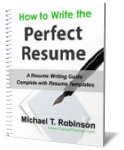"Police Patrol Officer"
Job Description - Part 4 - Abilities Needed
Part 1
Duties / Tasks
Part 2
Activities
Part 3
Skills
Part 4
Abilities
Part 5
Knowledge
Abilities Needed for: "Police Patrol Officer"
1) Oral Comprehension -- The ability to listen to and understand information and ideas presented through spoken words and sentences.
2) Inductive Reasoning -- The ability to combine pieces of information to form general rules or conclusions (includes finding a relationship among seemingly unrelated events).
3) Oral Expression -- The ability to communicate information and ideas in speaking so others will understand.
4) Near Vision -- The ability to see details at close range (within a few feet of the observer).
5) Far Vision -- The ability to see details at a distance.
6) Speech Recognition -- The ability to identify and understand the speech of another person.
7) Speech Clarity -- The ability to speak clearly so others can understand you.
8) Deductive Reasoning -- The ability to apply general rules to specific problems to produce answers that make sense.
9) Problem Sensitivity -- The ability to tell when something is wrong or is likely to go wrong. It does not involve solving the problem, only recognizing there is a problem.
| Thanks for visiting CareerPlanner.com | ||

|
1) Use Career Testing to find the perfect career 2) Is your resume getting you enough interviews? |
 |

|
Thanks for visiting CareerPlanner.com 1) Use Career Testing to find the perfect career 2) Is your resume getting you enough interviews? |
 |
10) Flexibility of Closure -- The ability to identify or detect a known pattern (a figure, object, word, or sound) that is hidden in other distracting material.
11) Response Orientation -- The ability to choose quickly between two or more movements in response to two or more different signals (lights, sounds, pictures). It includes the speed with which the correct response is started with the hand, foot, or other body part.
Is being a "Police Patrol Officer" your very best career choice?
Our Career Interest Test will show you which careers match your interests.
Our Free Personality Test will show you which careers match your personality and why.
12) Reaction Time -- The ability to quickly respond (with the hand, finger, or foot) to a signal (sound, light, picture) when it appears.
13) Time Sharing -- The ability to shift back and forth between two or more activities or sources of information (such as speech, sounds, touch, or other sources).
14) Speed of Closure -- The ability to quickly make sense of, combine, and organize information into meaningful patterns.
15) Control Precision -- The ability to quickly and repeatedly adjust the controls of a machine or a vehicle to exact positions.
16) Multilimb Coordination -- The ability to coordinate two or more limbs (for example, two arms, two legs, or one leg and one arm) while sitting, standing, or lying down. It does not involve performing the activities while the whole body is in motion.
17) Rate Control -- The ability to time your movements or the movement of a piece of equipment in anticipation of changes in the speed and/or direction of a moving object or scene.
18) Information Ordering -- The ability to arrange things or actions in a certain order or pattern according to a specific rule or set of rules (e.g., patterns of numbers, letters, words, pictures, mathematical operations).
19) Written Expression -- The ability to communicate information and ideas in writing so others will understand.
20) Written Comprehension -- The ability to read and understand information and ideas presented in writing.
21) Selective Attention -- The ability to concentrate on a task over a period of time without being distracted.
22) Perceptual Speed -- The ability to quickly and accurately compare similarities and differences among sets of letters, numbers, objects, pictures, or patterns. The things to be compared may be presented at the same time or one after the other. This ability also includes comparing a presented object with a remembered object.
23) Spatial Orientation -- The ability to know your location in relation to the environment or to know where other objects are in relation to you.
24) Category Flexibility -- The ability to generate or use different sets of rules for combining or grouping things in different ways.
25) Speed of Limb Movement -- The ability to quickly move the arms and legs.
26) Depth Perception -- The ability to judge which of several objects is closer or farther away from you, or to judge the distance between you and an object.
27) Static Strength -- The ability to exert maximum muscle force to lift, push, pull, or carry objects.
28) Stamina -- The ability to exert yourself physically over long periods of time without getting winded or out of breath.
29) Night Vision -- The ability to see under low light conditions.
30) Peripheral Vision -- The ability to see objects or movement of objects to one's side when the eyes are looking ahead.
Job Description for "Police Patrol Officer" continued here...
Part 1
Duties / Tasks
Part 2
Activities
Part 3
Skills
Part 4
Abilities
Part 5
Knowledge
"Police Patrol Officer" Holland / RIASEC Career Code: R-S-E SOC: 33-3051.01
Click here for "Police Patrol Officer" Jobs
See the Future Outlook and Educational Requirements for "Police Patrol Officer"
Our Most Popular Products





